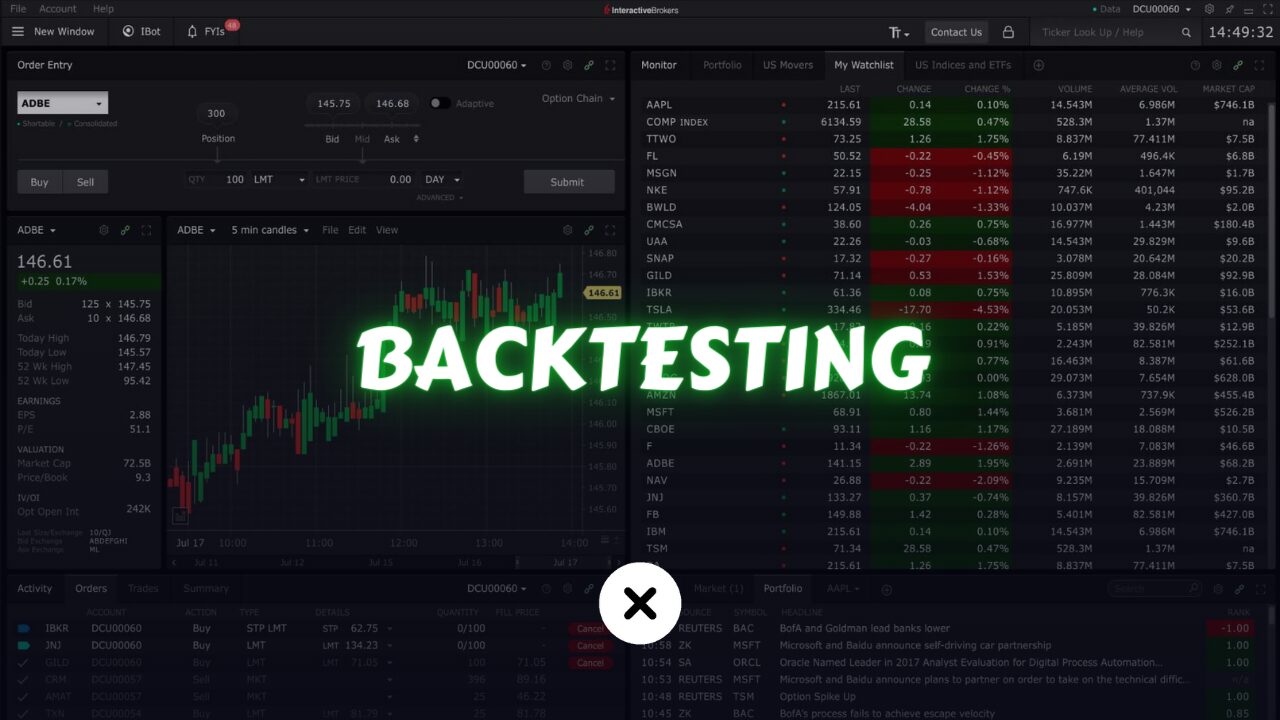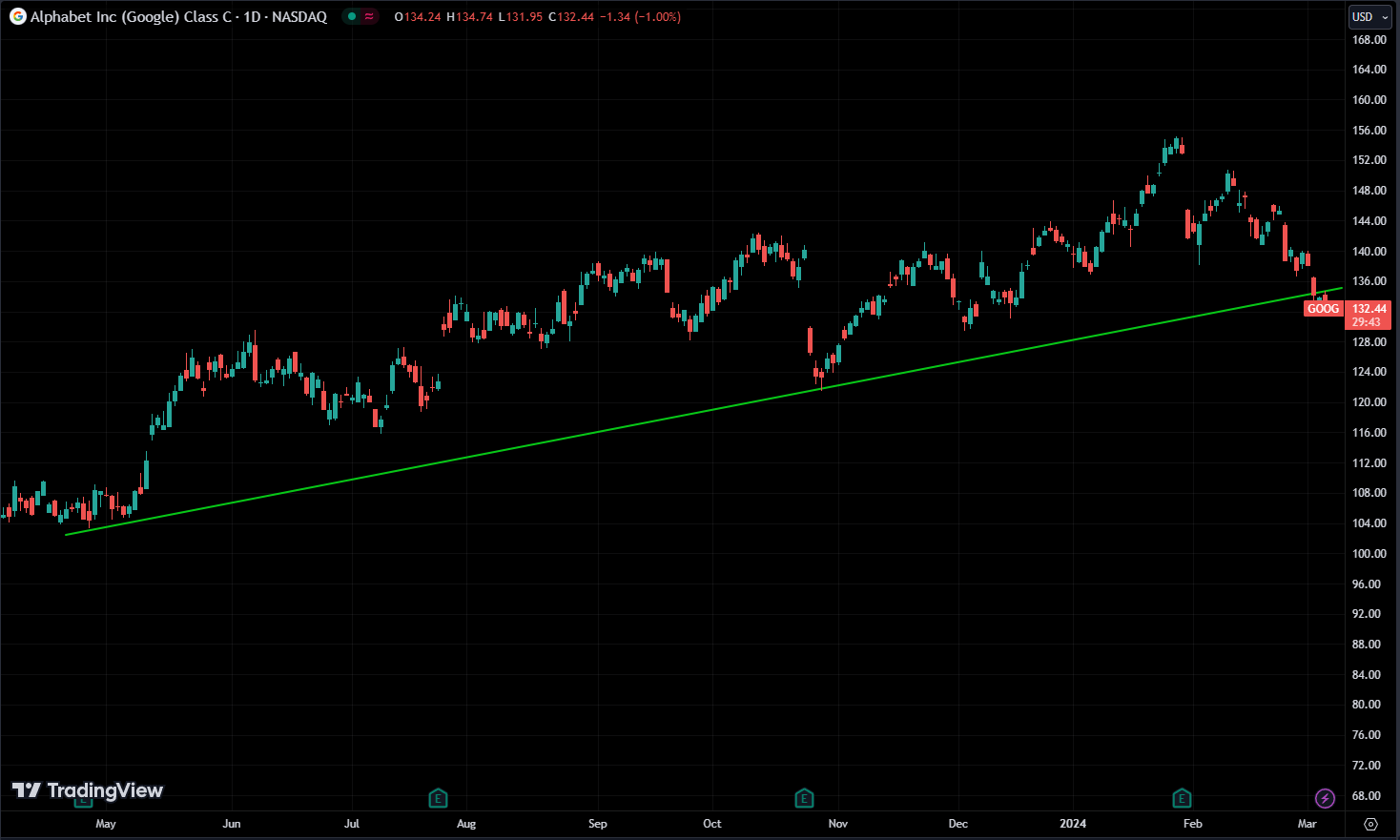
In the ever-changing world of financial markets, traders are always looking for ways to gain an advantage and reduce risks. Creating a successful trading strategy needs careful planning, with thorough analysis and testing being crucial. Backtesting is one of the best ways to check if a trading strategy is likely to work.
In this article, We going to learn how to backtest a trading strategy to see whether the strategy is effective or not.
What is Backtesting?
Backtesting involves applying a trading strategy to historical market data to assess its performance and profitability. By simulating trades under past market conditions, traders can gain insights into the strategy’s strengths, weaknesses, and overall effectiveness.
Backtesting is one of the phases of implementing a trading strategy.
How to Backtest a Trading Strategy?
In previous articles, we discussed creating a trading strategy. Once you’ve come up with one, the next step is backtesting it before you start paper trading. This means checking how the strategy would have done in the past. If the results look promising, you can then try it out in paper trading to see if you can replicate those same results in the real market.
Now, how can we do this? Well, there are several ways. From something simple to more advanced programs.
The easiest way is to just look at the chart and see where your strategy’s conditions are met. If you had taken that trade, you can then see how it would have performed.

For instance, if you’re into trend trading and you notice a trend in past market data, you can imagine, “Here is my setup, and I should have opened a trade here according to my trading plan.” Then, you can see if it would have hit the take profit or stop loss. You repeat this process wherever you see a trading setup in the past data and collect those results to see if the strategy is performing well or not.
So, how can you tell if your trading strategy is doing well or not? You look at the metrics. Things like win-loss ratio, batting average, Sharpe ratio. We’ve talked about this before, what kind of ideal numbers these metrics should have for a strategy to be consistently profitable.
Now, this method is more of a manual approach, where you do all the work yourself to see. The issue with it is that you can’t test the strategy for a longer period.
I mean, backtesting a day trading strategy for the past year means you have to test 252 days of data if you’re trading stocks, and if you’re trading crypto, then 365 days. That’s a very tough task for a human to do, and you can sometimes make mistakes. But it’s still doable if you have the time and dedication for it.
Another way to conduct backtesting is by utilizing your platform. Platforms like cTrader, thinkorswim, TradeStation, and NinjaTrader offer features for backtesting your strategy. This method provides more precise results than manual backtesting.
Another option for backtesting is through TradingView. It’s technically more manual, but it still does the job. So, if you’re already a TradingView user, instead of doing manual backtesting, you can utilize this feature to backtest more effortlessly.
Lastly, the more advanced way to backtest is by constructing your own software for backtesting and optimization. What does that mean? Don’t worry. There are pre-built frameworks designed specifically for backtesting trading strategies. However, there are many of them, and they differ in various ways. So, let’s explore a few examples of what they are and what they are capable of.
Frameworks for Backtesting
QuantConnect:
QuantConnect is a powerful platform that caters to both traders and developers, providing them with the tools necessary to create, backtest, and deploy trading algorithms across various asset classes. The platform’s user-friendly interface makes it accessible to traders of all levels of experience, while its extensive library of financial data ensures that users have access to the information they need to develop and test their strategies effectively.
One of the key features of QuantConnect is its ability to handle multiple asset classes, including stocks, options, futures, and cryptocurrencies. This versatility allows traders to diversify their portfolios and explore opportunities across different markets.
QuantConnect’s backtesting capabilities are particularly robust, allowing users to simulate trading strategies using historical data to evaluate their performance under different market conditions. Traders can customize their backtests by adjusting parameters such as entry and exit rules, position sizing, and risk management parameters to optimize their strategies for maximum profitability.
The platform’s deployment functionality enables users to take their tested strategies live, executing trades in real-time through supported brokerage integrations. This seamless transition from backtesting to live trading streamlines the process of implementing profitable strategies in the market.
Additionally, QuantConnect provides access to a vast community of traders and developers who share ideas, strategies, and insights, fostering collaboration and knowledge sharing among users. This community-driven approach enhances the learning experience and allows traders to stay updated on the latest developments in algorithmic trading.
Python Based Libraries
Backtrader:
backtrader is a popular Python library for backtesting trading strategies. It provides a flexible and intuitive framework for developing and testing trading algorithms across various asset classes.
With backtrader, traders can easily define custom indicators, signals, and trading rules using Python code. The library also supports multiple data feeds, allowing users to incorporate different data sources into their backtests.
Additionally, backtrader offers built-in support for optimization and walk-forward analysis, enabling traders to fine-tune their strategies for optimal performance.
Pros:
- Flexible and intuitive framework for developing and testing trading algorithms.
- Built-in support for optimization and walk-forward analysis.
- Supports multiple data feeds and data sources.
- Large community and extensive documentation for support and learning.
Cons:
- Steeper learning curve for beginners due to its comprehensive feature set.
- Limited out-of-the-box support for machine learning integration.
PyAlgoTrade:
PyAlgoTrade is another Python library designed for backtesting trading strategies. It offers a simple and easy-to-use interface for developing and testing algorithmic trading systems.
PyAlgoTrade provides a wide range of built-in technical indicators and event-driven backtesting capabilities, allowing traders to create complex strategies with ease.
The library also supports paper trading and live trading via brokerage APIs, making it suitable for both backtesting and real-world deployment.
Pros:
- Simple and easy-to-use interface for developing and testing algorithmic trading systems.
- Built-in support for paper trading and live trading via brokerage APIs.
- Provides a wide range of built-in technical indicators.
- Suitable for both backtesting and real-world deployment.
Cons:
- Less extensive feature set compared to other libraries like backtrader.
- Limited community support and fewer resources available for advanced usage.
backtesting.py:
backtesting.py is a lightweight Python library for backtesting trading strategies. It provides a minimalist yet powerful framework for conducting backtests using historical market data.
With backtesting.py, traders can define custom trading strategies and evaluate their performance using various metrics such as profit and loss, Sharpe ratio, and maximum drawdown. The library also supports vectorized backtesting, allowing users to efficiently analyze large datasets and optimize their strategies for better results.
Pros:
- Lightweight and minimalist framework for conducting backtests.
- Supports vectorized backtesting for efficient analysis of large datasets.
- Customizable metrics and performance analysis tools.
- Suitable for rapid prototyping and experimentation.
Cons:
- Less feature-rich compared to more comprehensive libraries like backtrader.
- Limited built-in support for optimization and portfolio rebalancing.
vectorbt:
vectorbt is a Python library for backtesting and analyzing trading strategies using vectorized operations. It offers a high-performance framework for working with financial data and implementing complex trading strategies.
vectorbt provides built-in support for common trading operations such as position sizing, portfolio rebalancing, and risk management. The library also includes powerful visualization tools for analyzing strategy performance and identifying potential opportunities.
Pros:
- High-performance framework for backtesting and analyzing trading strategies.
- Built-in support for common trading operations and risk management.
- Powerful visualization tools for analyzing strategy performance.
- Supports vectorized operations for efficient processing of financial data.
Cons:
- Relatively new library with fewer resources and community support compared to more established ones.
- Learning curve for users unfamiliar with vectorized operations and advanced data analysis techniques.
bt:
bt is a Python library for backtesting trading strategies and portfolio optimization. It provides a simple and intuitive interface for defining and testing trading strategies using historical market data.
bt supports various asset classes and trading instruments, making it suitable for a wide range of trading strategies. The library also includes built-in support for performance analysis and risk management, allowing traders to evaluate the effectiveness of their strategies and make informed decisions.
Pros:
- Simple and intuitive interface for defining and testing trading strategies.
- Supports various asset classes and trading instruments.
- Built-in support for performance analysis and risk management.
- Suitable for beginners and experienced traders alike.
Cons:
- Limited customization options compared to more flexible libraries like backtrader.
- Less extensive documentation and community support.
These libraries provide access to a wide range of data sources and technical indicators, allowing traders to implement complex strategies with ease and analyze their performance effectively.
Each backtesting library has its own strengths and weaknesses. The choice of library depends on factors such as the trader’s level of experience, specific requirements, preferences for features, and ease of use.
Benefits of Backtesting
Evaluation of Strategy Performance: Backtesting allows traders to assess the performance of their trading strategies using historical market data. By simulating trades over past periods, traders can determine the profitability, risk-adjusted returns, and other performance metrics of their strategies.
Risk Management: Backtesting helps traders identify potential risks associated with their strategies. By analyzing metrics such as drawdowns, maximum loss, and volatility, traders can assess the risk exposure of their strategies and implement appropriate risk management measures.
Strategy Optimization: Backtesting enables traders to fine-tune their trading strategies for optimal performance. By testing different parameters, entry and exit rules, and risk management techniques, traders can identify the most effective configuration for their strategies. and this is one of the most important reasons why you should backtest your strategy.
Validation of Trading Ideas: Backtesting allows traders to validate their trading ideas and hypotheses using empirical data. By testing the viability of their strategies against historical market conditions, traders can gain confidence in their approaches before deploying them in live trading.
Psychological Preparation: Backtesting helps traders prepare psychologically for the challenges of real-time trading. By experiencing the ups and downs of simulated trading, traders can develop the discipline and emotional resilience needed to navigate the markets successfully.
Cost-Efficient Learning: Backtesting provides a cost-effective means of learning and skill development for traders. By gaining experience through simulated trading, traders can refine their skills and strategies without risking real capital.
Conclusion
Overall, backtesting is a valuable tool for traders and investors seeking to develop, refine, and validate their trading strategies. By leveraging historical data to simulate trades and analyze performance, traders can make informed decisions and improve their chances of success in the financial markets.
